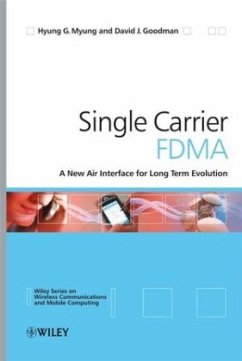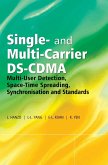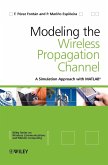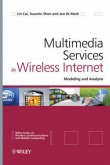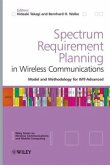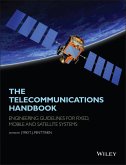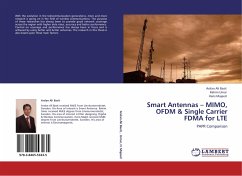This book provides a technical overview of Single Carrier FDMA (SC-FDMA). SC-FDMA is currently a working assumption for the uplink radio air interface in the 3GPP Long Term Evolution (long term evolution). The book places SC-FDMA in the wider context of wireless communications technology and will provide readers with an in-depth overview and tutorial on SC-FDMA technologies over ten chapters. Features link level simulation of an SC-FDMA System using Matlab.
Single Carrier Frequency Division Multiple Access (SC-FDMA) is a novel method of radio transmission under consideration for deployment in future cellular systems; specifically, in 3rd Generation Partnership Project Long Term Evolution (3GPP LTE) systems. SC-FDMA has drawn great attention from the communications industry as an attractive alternative to Orthogonal Frequency Division Multiple Access (OFDMA).
Single Carrier FDMA places SC-FDMA in the wider context of wireless communications, providing the reader with an in-depth tutorial on SC-FDMA technology. The book introduces the reader to this new multiple access technique that utilizes single carrier modulation along with orthogonal frequency multiplexing and frequency domain equalization, plus its applications in communications settings. It considers the similarities with and differences from orthogonal frequency division modulation, multiplexing, and multiple access used extensively in cellular, broadcasting, and digital subscriber loop applications. Particular reference is made to the peak power characteristics of an SC-FDMA signal as an added advantage over OFDMA.
Key features:
_ Provides an extensive overview of the principles of SC-FDMA and its relation to other transmission techniques.
_ Explains how the details of a specific implementation influence the tradeoffs among various figures of merit.
_ Describes in detail the configuration of the SC-FDMA uplink transmission scheme published by 3GPP.
_ Features link level simulation of an uplink SC-FDMA system using MATLAB.
This is an essential text for industry engineers who are researching and developing 3GPP LTE systems. It is suitable for engineers designing wireless network equipment, handsets, data cards, modules, chipsets, and test equipment as well as those involved in designing LTE infrastructure. It would also be of interest to academics, graduate students, and industry researchers involved in advanced wireless communications, as well as business analysts who follow the cellular market.
Hinweis: Dieser Artikel kann nur an eine deutsche Lieferadresse ausgeliefert werden.
Single Carrier Frequency Division Multiple Access (SC-FDMA) is a novel method of radio transmission under consideration for deployment in future cellular systems; specifically, in 3rd Generation Partnership Project Long Term Evolution (3GPP LTE) systems. SC-FDMA has drawn great attention from the communications industry as an attractive alternative to Orthogonal Frequency Division Multiple Access (OFDMA).
Single Carrier FDMA places SC-FDMA in the wider context of wireless communications, providing the reader with an in-depth tutorial on SC-FDMA technology. The book introduces the reader to this new multiple access technique that utilizes single carrier modulation along with orthogonal frequency multiplexing and frequency domain equalization, plus its applications in communications settings. It considers the similarities with and differences from orthogonal frequency division modulation, multiplexing, and multiple access used extensively in cellular, broadcasting, and digital subscriber loop applications. Particular reference is made to the peak power characteristics of an SC-FDMA signal as an added advantage over OFDMA.
Key features:
_ Provides an extensive overview of the principles of SC-FDMA and its relation to other transmission techniques.
_ Explains how the details of a specific implementation influence the tradeoffs among various figures of merit.
_ Describes in detail the configuration of the SC-FDMA uplink transmission scheme published by 3GPP.
_ Features link level simulation of an uplink SC-FDMA system using MATLAB.
This is an essential text for industry engineers who are researching and developing 3GPP LTE systems. It is suitable for engineers designing wireless network equipment, handsets, data cards, modules, chipsets, and test equipment as well as those involved in designing LTE infrastructure. It would also be of interest to academics, graduate students, and industry researchers involved in advanced wireless communications, as well as business analysts who follow the cellular market.
Hinweis: Dieser Artikel kann nur an eine deutsche Lieferadresse ausgeliefert werden.

